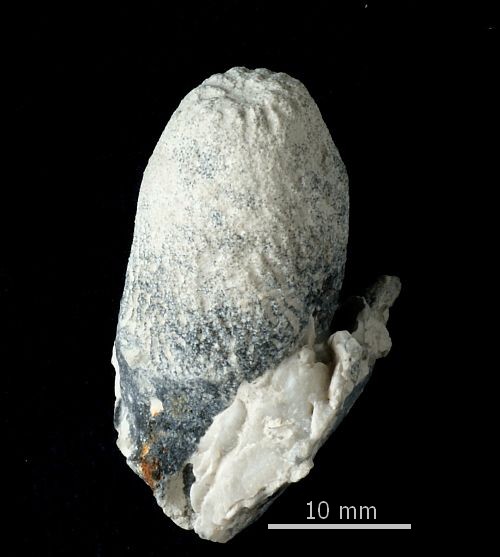
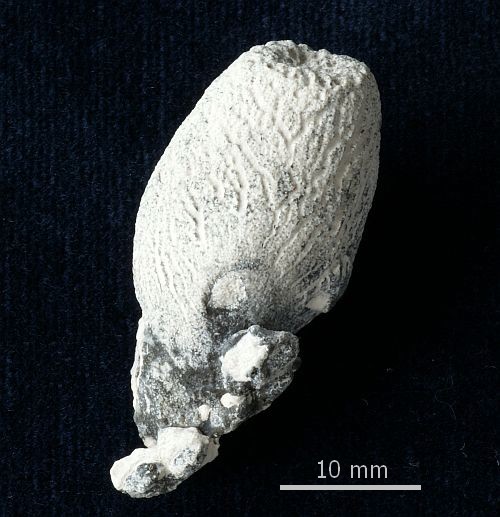
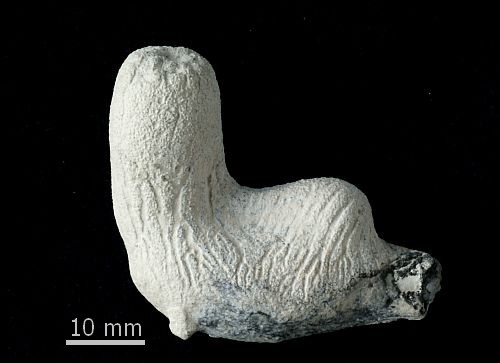
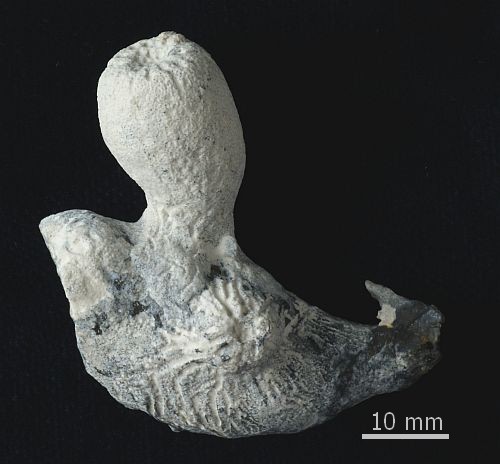
|
Prokaliapsis clavata Hinde 1883
Prokaliapsis clavata, originally described as Ragadinia clavata by Hinde (1883), is moderately abundant in the Lower and Upper Campanian of Misburg and Höver.
Solitary individuals are club-shaped, cylindrical, or barrel-shaped, with a rounded, truncated, or convave apex. Most specimens are more or less J-shaped, with a few simple, strong roots, if preserved. Asymetrical branching (budding ?) appears to be common.
Prokaliapsis clavata is a rather small sponge species, typically between 30 and 70 mm tall and 10 to 15 mm in diameter.
Longitudinal or oblique grooves are characteristic, but are not always well developed. The external surface shows many, randomly scattered, tiny ostia. Several, narrowly crowded postica corresponding to longitudinal tubular channels exit on the top of the sponge.
Dermal scleres are virtually lacking in some cases, but may be abundant in others, especially in the basal parts ot the sponge. They consist of phyllotriaenes with very short rhabdomes.
|
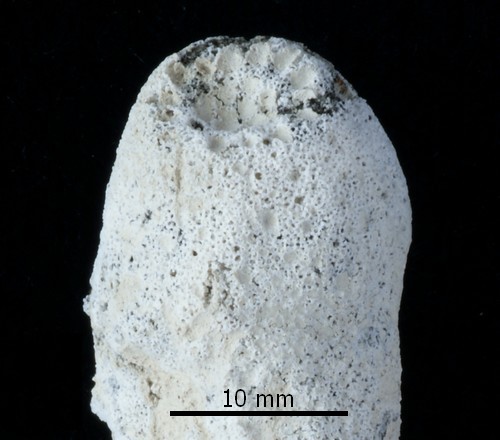
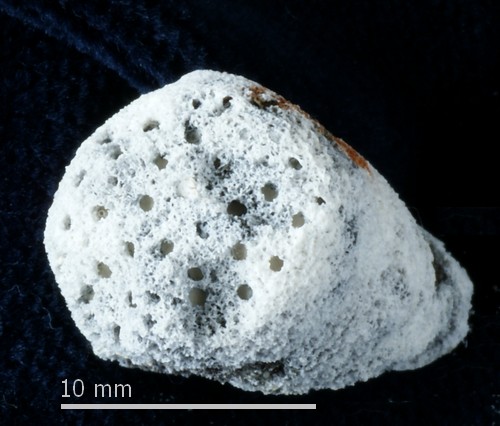
|
Two etched samples of Prokaliapsis clavata, revealing the very dense skeleton.
Longitudinal channels may be recognized in both images. The upper image also shows many ostia and radially arranged epirhyses.
|
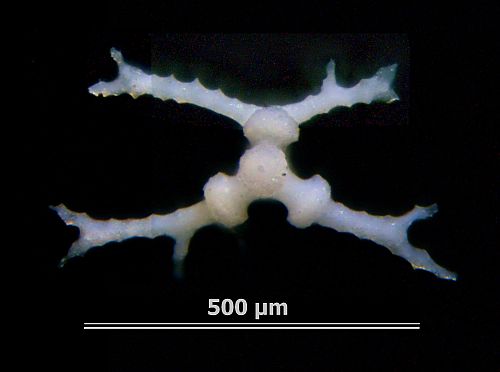
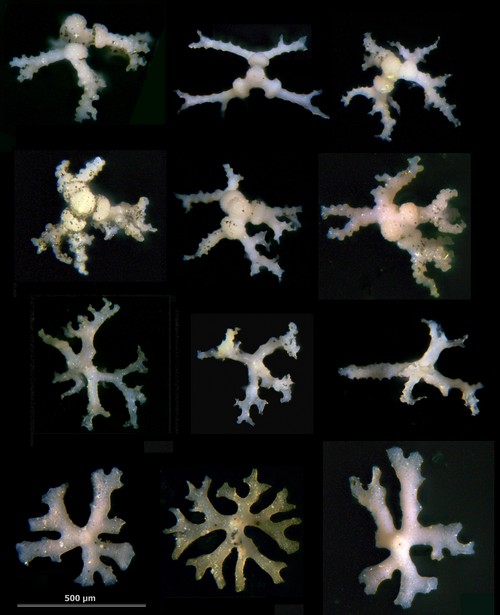
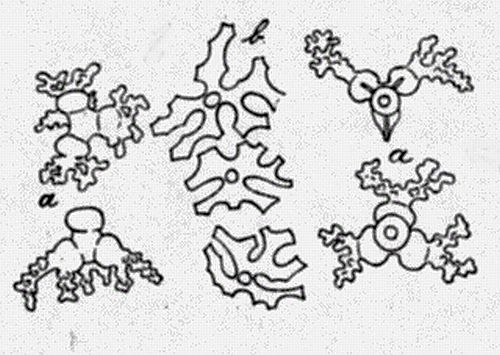
|
The image shows a typical trider of Prokaliapsis clavata. The triders show ring-like swellings near the base of the arms (clads), and one arm is reduced to a knob-like brachyome. (These features place Prokaliapsis clavata into the family Phymaraphiniidae.)
A complete set of sclere types of Prokaliapsis clavata is displayed in the following Plate. Rows 1 and 2 show some more triders, row 3 shows examples of normal tetraclone desmas, and row 4 shows some examples of dermal phyllotriaenes.
The drawing is reproduced from Schrammen (1910). It shows
(a) typical tetracladine desmas with one arm reduced to a knob, and the other arms furnished with a ring-like swelling.
(b) dermal phyllotriaenes .
|
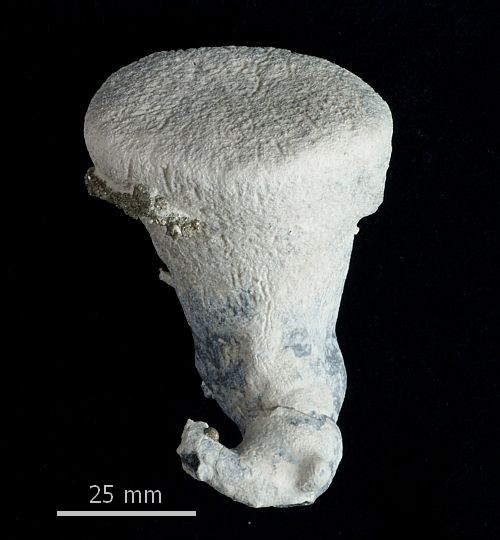
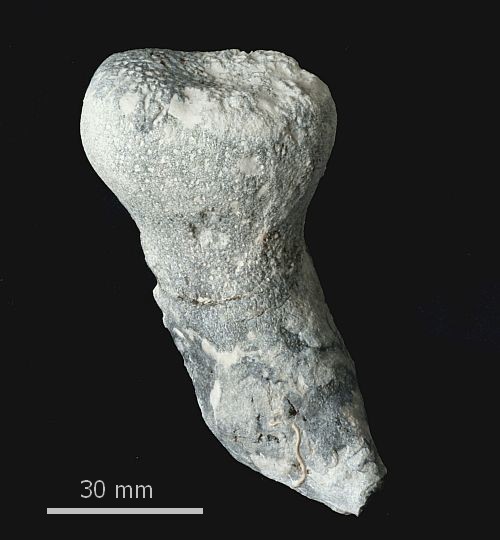
|
Prokaliapsis sp. new species
A number of specimens collected in the Allemannia-Quarry (Lower Campanian, Höver) over the last couple years suggest existence of a previously unrecognized Prokaliapsis species. A preliminary description of this new species, which is now documented by some 15 specimens, will be given here.
Although similar to Prokaliapsis clavata, the new species is generally larger and has an obconical to "nail-head" habit. On a microskopic scale, its triders show distinct differences in the shape of the brachyome.
The largest known individuals are close to 100 mm tall and 40 mm wide at their apices. The apex is flat and shows many postica (1.5 mm wide) of tubular aporhysal canals which transverse the sponge longitudinally. Anastomosing aporhysal furrows are prominent in the upper and lower sections of typical individuals, while in the mid-section, there are characteristic macro-pores with "bird-foot",inverted v- or y-shaped apertures instead.
Solitary individuals often are j-shaped, as illustrated by the two images. Several specimens consistinmg of intergrown individuals, as well as cases of dichotomous and asymmetrical branching (budding ?) suggest that the species tends to occur in groups.
|
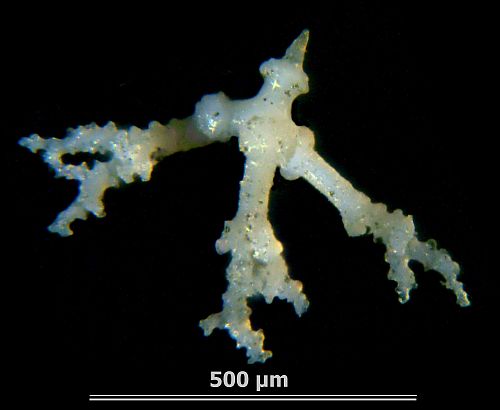
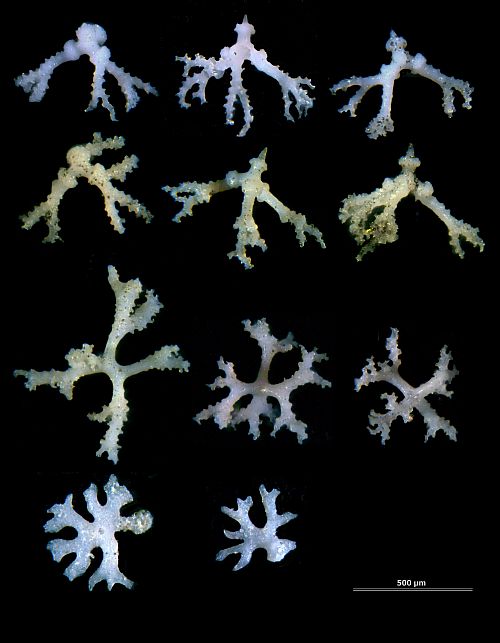
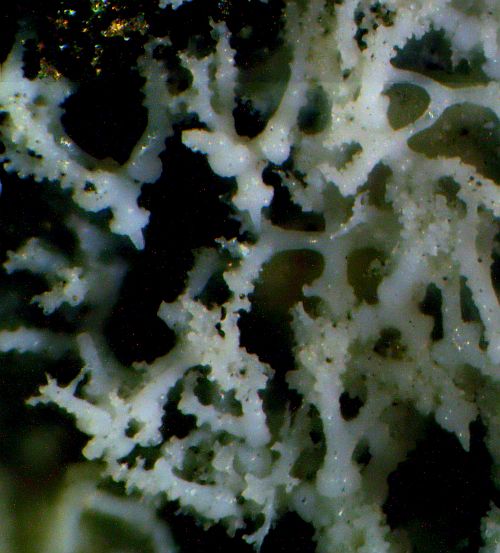
|
The skeletal elements of the new Prokaliapsis species comprise very characteristic triders. These are characterized by a brachyome composed of a basal disc and a conical spike. See images and rows 1 and 2 ot the Plate.
The three cladomes show typical annular swellings near the center of the trider. The cladomes may be multiply branched and strongly ornamented with hump-like spikes in their distal parts.
Besides the triders, the set of scleres comprises normal tetraclones (Plate, row 3) and dermal phyllotriaenes (Plate, row 4).
The last image gives an impression of the dense skeletal structure, consisting of triders and normal tetraclonal desmas.
|
Discussion:
The species originally described by Hinde (1883) as Ragadinia clavata from the White Chalk of Wiltshire and depicted in Table XIX, Figs. 4, 4a,b,c of Hinde (1883) is considered identical to the above described Prokaliapsis clavata. In particular, the swellings and the brachyome of the triders are nearly spherical in both cases.
On the other hand, Moret (1926, Figs. 72-1, 72-2) shows drawings of triders with spiked brachyomes which he assigned to Prokaliapsis clavata and Prokaliapsis arborescens. Thus the author doubts that Moret's triders (Fig. 72-2) belong to Prokaliapsis clavata. On the other hand, Moret's triders with spiked brachyomes could suggest that the new Prokaliapsis species described here might be equivalent to Jerea arborescens of Michelin (1840-1847). However, judging from the drawings in Michelin (1840-1847, Plate 42, 2a,b), this multiply branched sponge is yet another species.













